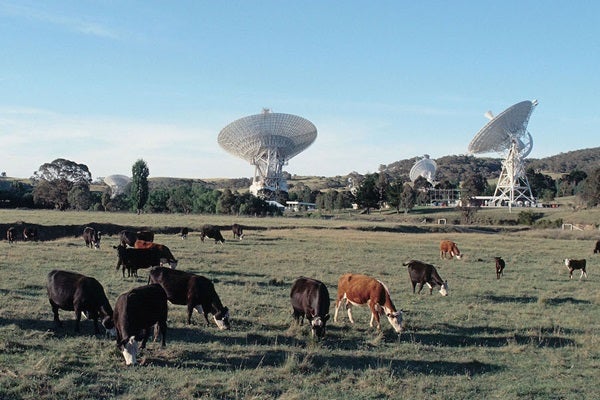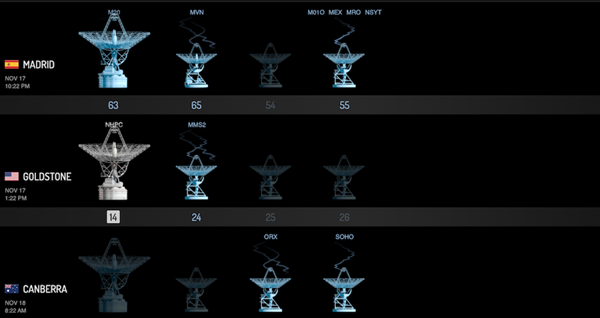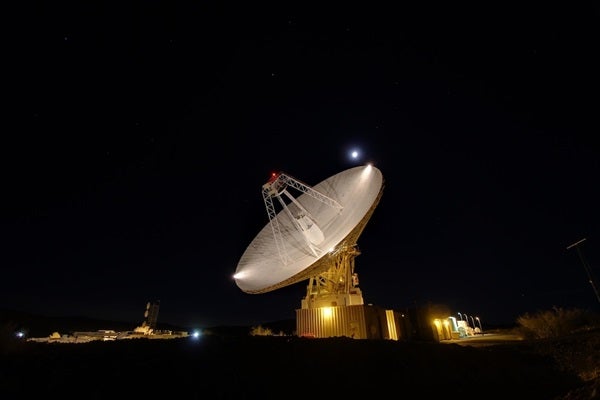NASA’s Voyager 1 and Voyager 2 spacecraft are still chugging along out of the solar system, despite the fact they were launched more than 43 years ago. And while both robotic explorers have their problems, the Voyagers do still have some functioning instruments, with the two craft periodically beaming useful data back to Earth.
Voyager 2 is currently about 125 astronomical units (AU) from the Sun, where 1 AU is the average Earth-Sun distance. That’s about three times farther away than Pluto, which means that any radio signals Voyager 2 sends take about 17 hours and 25 minutes to reach Earth. And add another 17+ hours if ground control wants to send back a response. Voyager 1 is even further away; the spacecraft is almost 151 AU from the Sun. That equates to about 21 hours of travel time for a one-way communication.
Despite the long distance, researchers and flight controllers commonly touch base with the Voyagers. But in March 2020, the cord was cut, so to speak. That’s because NASA needed to carry out repairs on the only radio dish that can serve as a cosmic megaphone to the craft — a 230-foot-wide (70 meter) antenna in Canberra, Australia, known as DSS-43. For seven months, Voyager 2 was able to still transmit data to Earth, but it could not receive communications.
Then, on October 29, 2020, NASA felt that DSS-43, while not completely repaired, was up to the challenge of screaming across the solar system once again. They sent a test signal from the dish to Voyager 2 that included specific commands for the spacecraft to execute. Voyager 2 later radioed back that it indeed received the message and successfully carried out its instructions — a testament to not only the longevity of the spacecraft itself, but also both the power of DSS-43 and its peers.
NASA’s Deep Space Network
The Canberra site is just one of three communications facilities that comprise the Deep Space Network (DSN). In addition to the Canberra location, the DSN also includes two other similar facilities: one in Madrid, Spain, and another other housed at Goldstone Observatory in Barstow, California. Each site has a 230-foot (70 m) antenna, as well as additional smaller radio dishes. But the Canberra facility is the only one in the southern hemisphere, which is why it has the only antenna with a direct line-of-sight to Voyager 2. When DSS-43 went offline this March, it was the longest cold shoulder that Earth had given Voyager 2 in the past 30 years.
The three sites that make up the DSN are roughly 120 degrees apart along the surface of the earth. This alignment is critical, as it means that at any given time, most spacecraft should be able to communicate with at least one DSN site.
In practical terms, NASA’s DSN maintains nearly constant contact with both crewed and robotic spacecraft. For instance, the DSN helped communicate with the Apollo astronauts as they ventured to the Moon — most notably during the Apollo 13 disaster, where the dying crafts’ transmissions were relatively weak.
All three DSN sites are run from the Deep Space Operations Center, which is part of the Jet Propulsion Laboratory (JPL) in Pasadena, California. From this single site, NASA and JPL are able to direct all spacecraft that they operate beyond low earth orbit (LEO), including, but not limited to: the two Voyager spacecraft, the New Horizons probe, the ARTEMIS solar wind probes, the Lunar Reconnaissance Orbiter, OSIRIS-Rex (which recently collected an overflowing haul of asteroid samples for return to Earth), Mars Odyssey, Mars Express, the Mars Reconnaissance Orbiter, and the Curiosity rover. In case you’re wondering, the DSN is no longer in contact with Pioneer 10 and 11, which were last heard from in 2003 and 2002, respectively.
Non-NASA deep space networks
NASA is not the only organization that requires the ability to contact objects beyond LEO. There are similar facilities around the globe operated by Russia, China, Japan, and the European Space Agency (ESA).
The former Soviet Union utilized their own deep space network to communicate with the fleet of Venera probes they sent to Venus, as well as their Phobos probes to Mars, among other robotic spacecraft. The Soviet deep space network sites, however, were not scattered across the globe; they were placed fully within Soviet territory. As such, they could not provide continuous round-the-clock contact with distant spacecraft.
On occasion, the Soviet Union and the United States even collaborated on projects that required communication with very distant craft, most famously when the Goldstone antenna received signals from Soviet Vega balloon probes in the 1980s.
Like NASA, ESA’s deep space network, known as Estrack, includes extensive facilities and radio antennas scattered around the world. Meanwhile, the Japanese space agency (JAXA) and the Indian space agency (ISRO) both maintain deep space networks that are much smaller and are only located at single sites in their respective countries. The JAXA network, for instance, has only a single 210-foot (64 m) dish located in the city of Saku.
Countries with even smaller space programs, however, tend to rely on the telecommunications capabilities of other nations. SpaceIL, the Israeli space agency, used the Swedish Space Corporation’s antennas to send commands to their ill-fated robotic lunar probe, Beresheet, as well as to track its position, movements, and crash landing.
Given the track record and relatively low-cost of radio transmissions — as well as the proliferation of distant spacecraft — it seems that NASA’s DSN and others like it will continue their service for decades to come. Voyager 2 is predicted to keep operating and communicating with Earth until at least 2025, and Voyager 1 might even make it to 2030. But eventually, the power supplied by their radioisotope thermoelectric generators (RTG) will be too weak to sustain any still-functioning instruments. After that, the Voyagers, like the Pioneer probes before them, will continue their adventure through the cosmos in silence.
Doug Adler is the co-author of From The Earth to the Moon: The Miniseries Companion.












